The hot sun beats down on your head. You can hear the rush of water as the Côa River cascades over rocks: the invitation to enjoy the cool of the green waterside is almost irresistible. But the rocks beckon. On the edge of the beach area, and running up the hillside, an abundance of engraved schist stones stand proudly displaying the artwork they have held for tens of thousands of years. Feast your eyes on the engravings, and then cool yourself at the river.

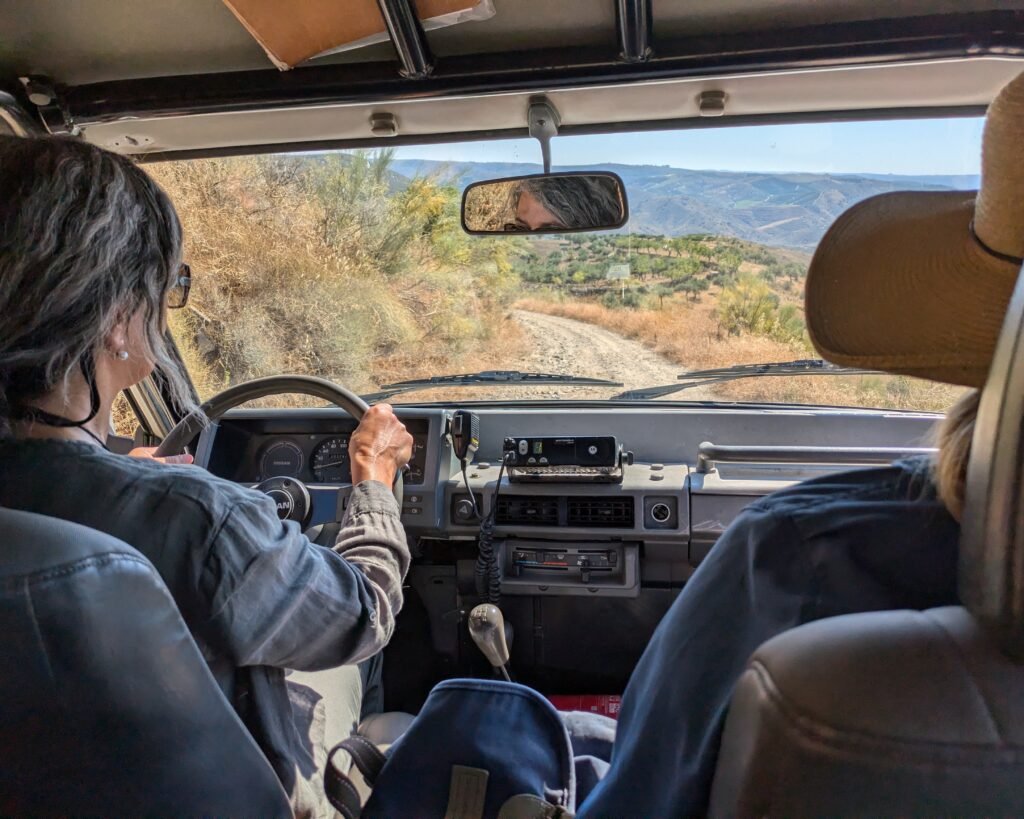

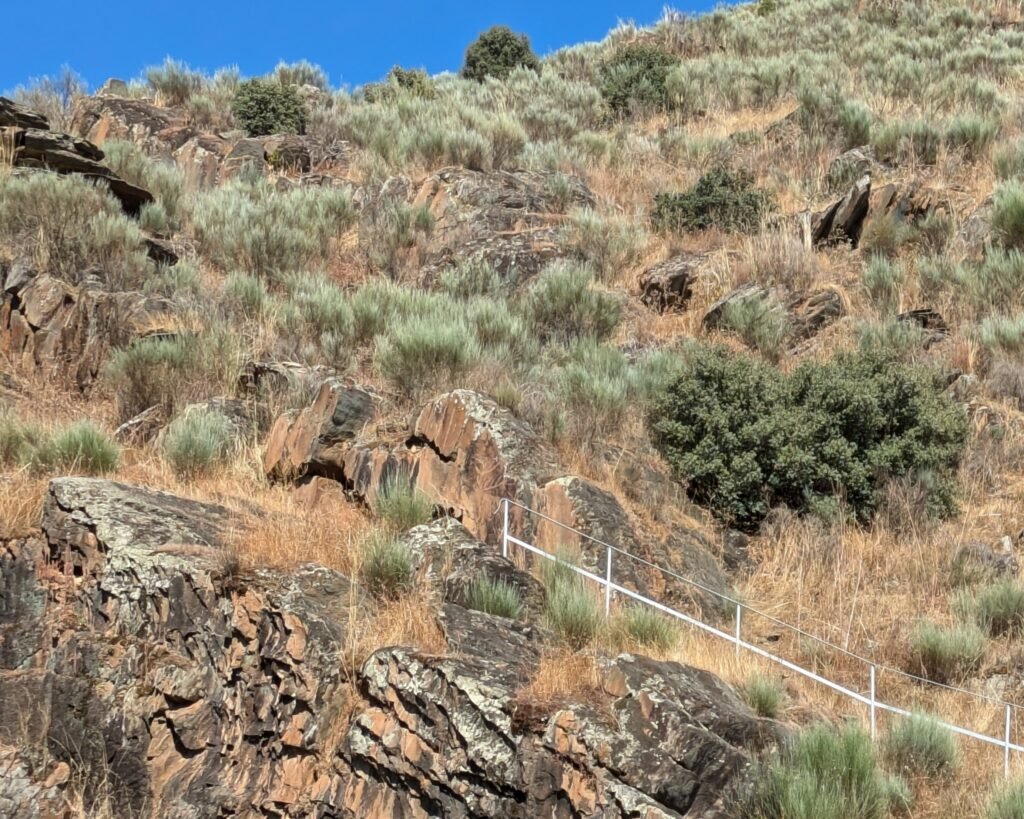
It’s a hot and dusty ride from Castelo Maior to the Penascosa site, but the reward of enjoying the vista of the Côa Valley, above its flooded section, makes it all worthwhile. Lush vineyards and flourishing olive and almond groves surround you, and the river’s course at the bottom is clearly demarcated by lush green vegetation. The guide from the Côa Museum explains the human aspect of the terrain: centuries of cultivation, years of exodus as the flooding of the valley loomed, and the return after the halting of the dam. Our guide, Aldina, paints a vivid picture for us, and then takes it back in time as we reach the Penascosa site.
The site is on the right side of a bend in the Côa River, with another site, Quinta da Barca, on the opposite bank. (Official visits to that site are not organized.) Aldina takes advantage of the cool shade by the river to explain the history of the engravings and the lifestyle of the Paleolithic people who carved them, ten to thirty thousand years ago. The Penascosa hill serves as a backdrop for the explanation, and as she talks we can just make out an engraving from our distant perspective. When freshly carved, the engravings must have been clearly visible. (Aldina explains that the patina which forms on the stone over the years dulls the stone and limits the visibility.)
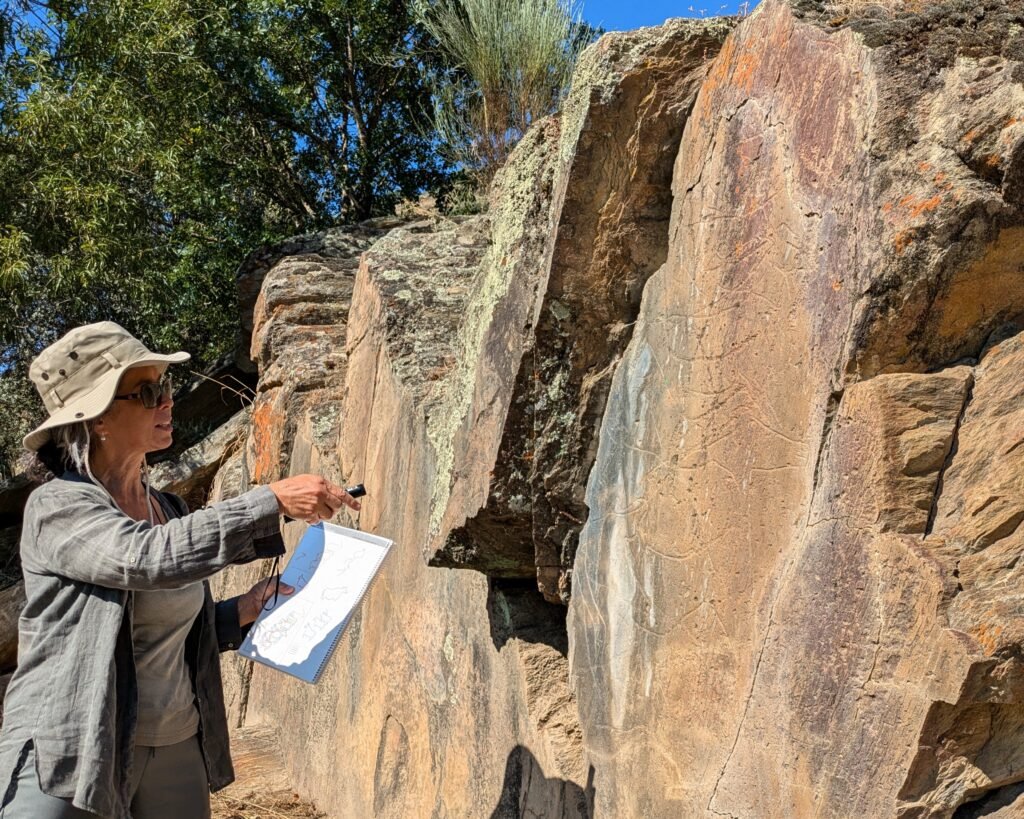

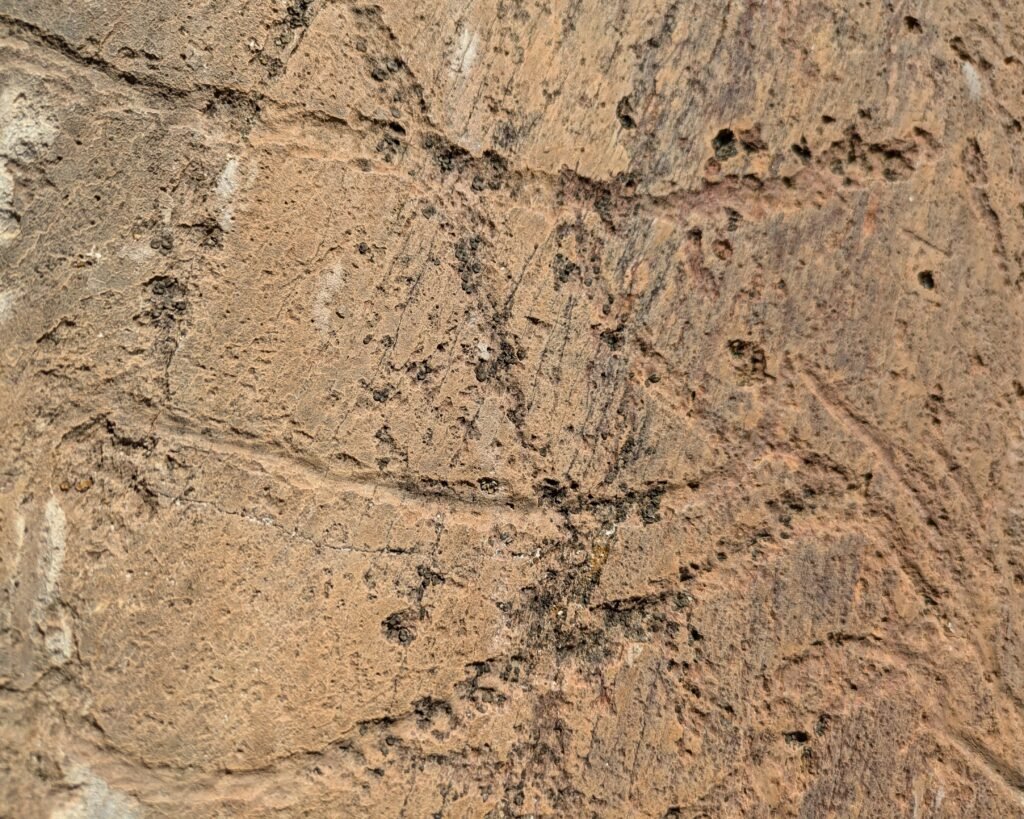
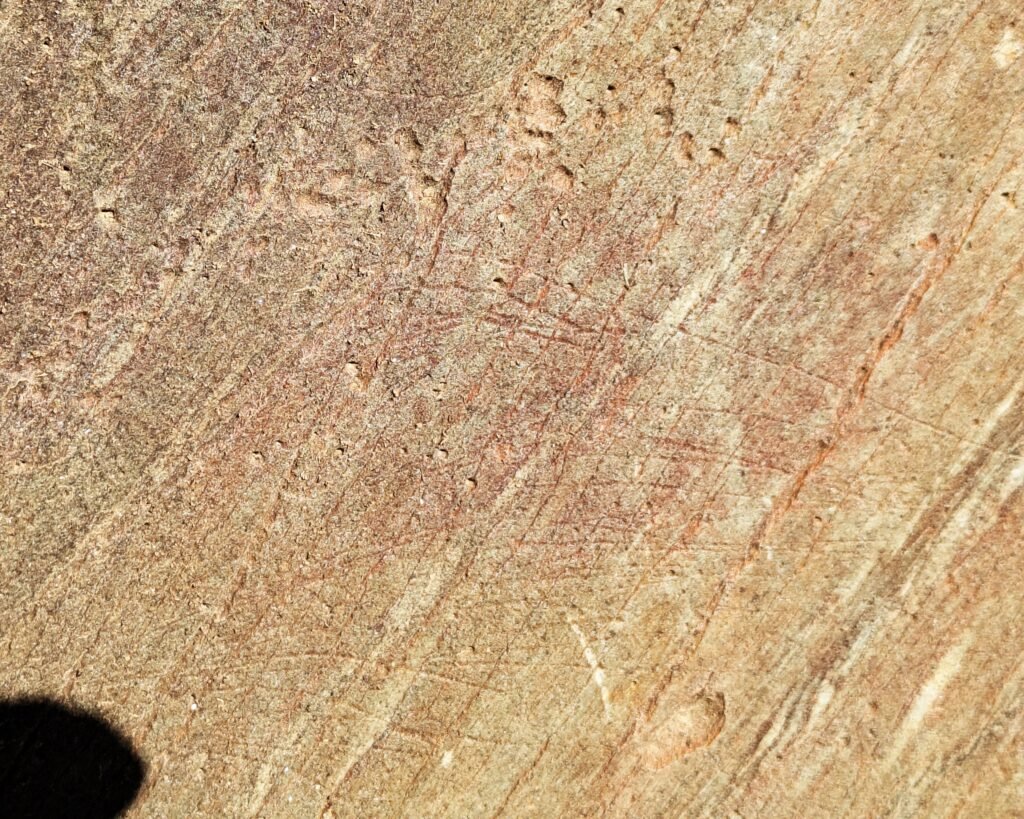
Aldina leads us to the first set of visited rocks. Many of the carvings are superimposed, one above another, and it can be hard to see each animal design. (There’s a famous rock from Quinta da Barca – a duplicate is in the Côa Museum – called “spaghetti rock” because it’s almost impossible to pick out the lines of individual animals.) Almost all the designs are of four large herbivores: aurochs (ancient wild bulls), horses, deer, and goats. Aldina shows us the carvings with a laser pointer and describes the carving techniques.
We can easily see the initial pecking, in which a harder stone is hammered into the schist face to make a pit or hole. A series of such pits or holes are made in a line, creating the shape of the animal. Abrasion is the making of a line (sometimes on top of a pecked line) by rubbing a pointed stone back and forth across the schist. There’s also filiform or fine-line incision, in which a small hard stone (quartz or flint) is used to carve a single fine line or a set of lines to make a shape.
Aldina explains that some of the stones used – such as the flint or quartz – are not local to the Côa Valley. They had come from quarries either closer to the coast or further inland. Some stones had been carried as far as 200km! There was obviously a great deal of movement during Paleolithic times.

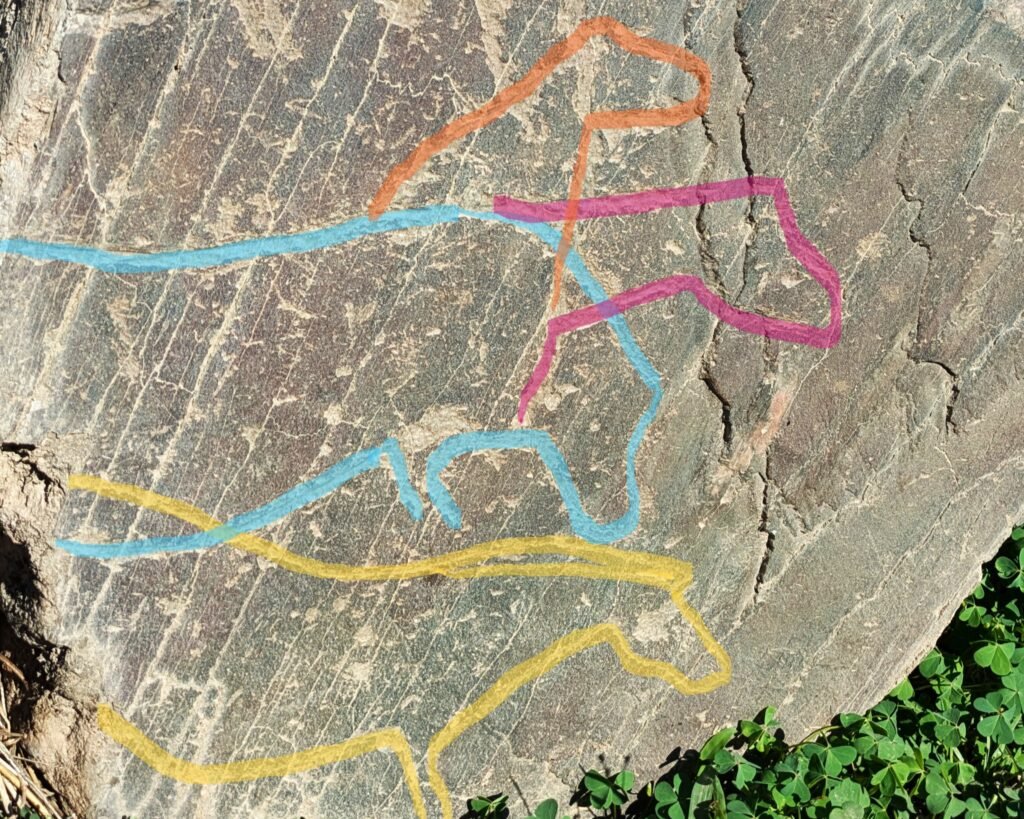
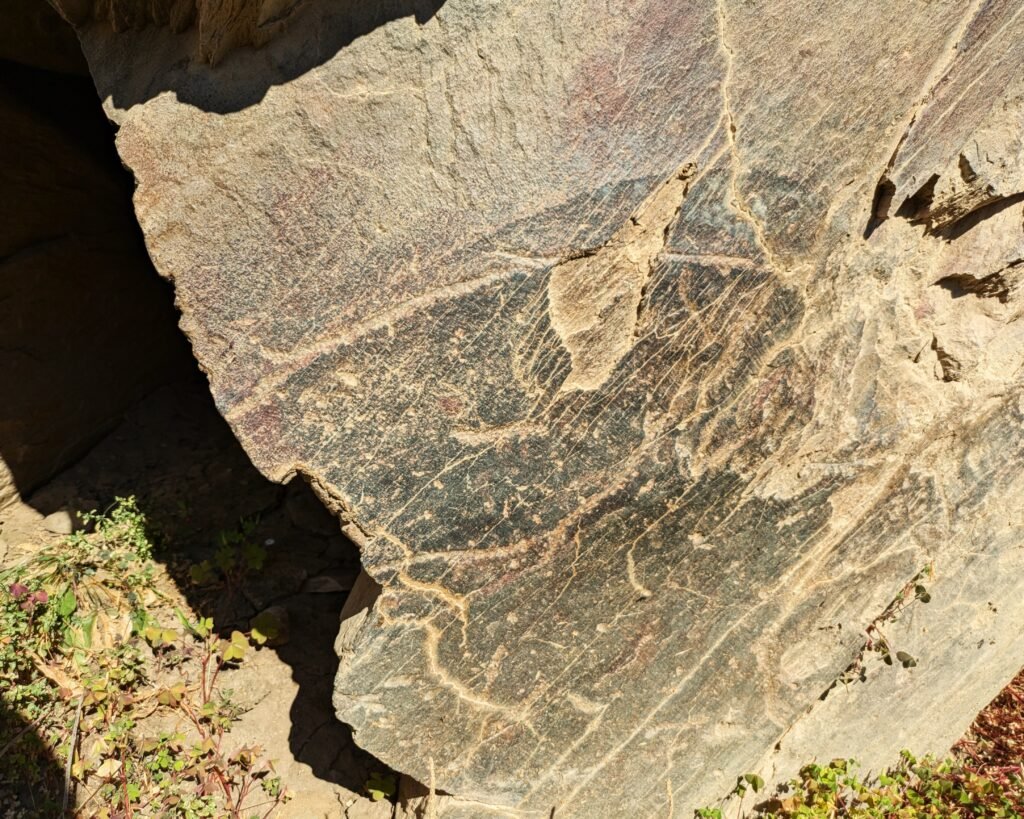

Rock 4 is famous for the “animated” image of a horse. Its head is shown three times, in different positions. At night, by flickering firelight, it can seem to move: was it a Paleolithic animated movie? The position of the female horse below suggests this was a depiction of a mating scene. The themes of life and reproduction and survival are seen throughout the Côa Valley.
There is also a rare example of a non-herbivore design: a fish, possibly a salmon, carved on one section of the rock.

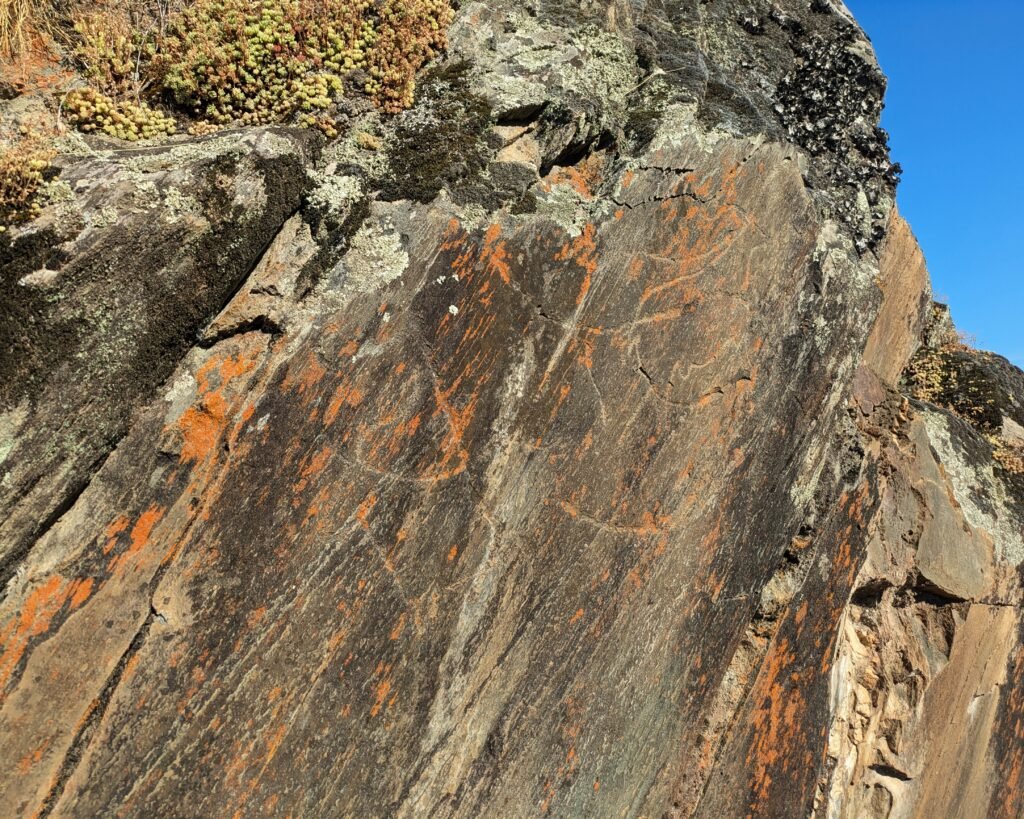

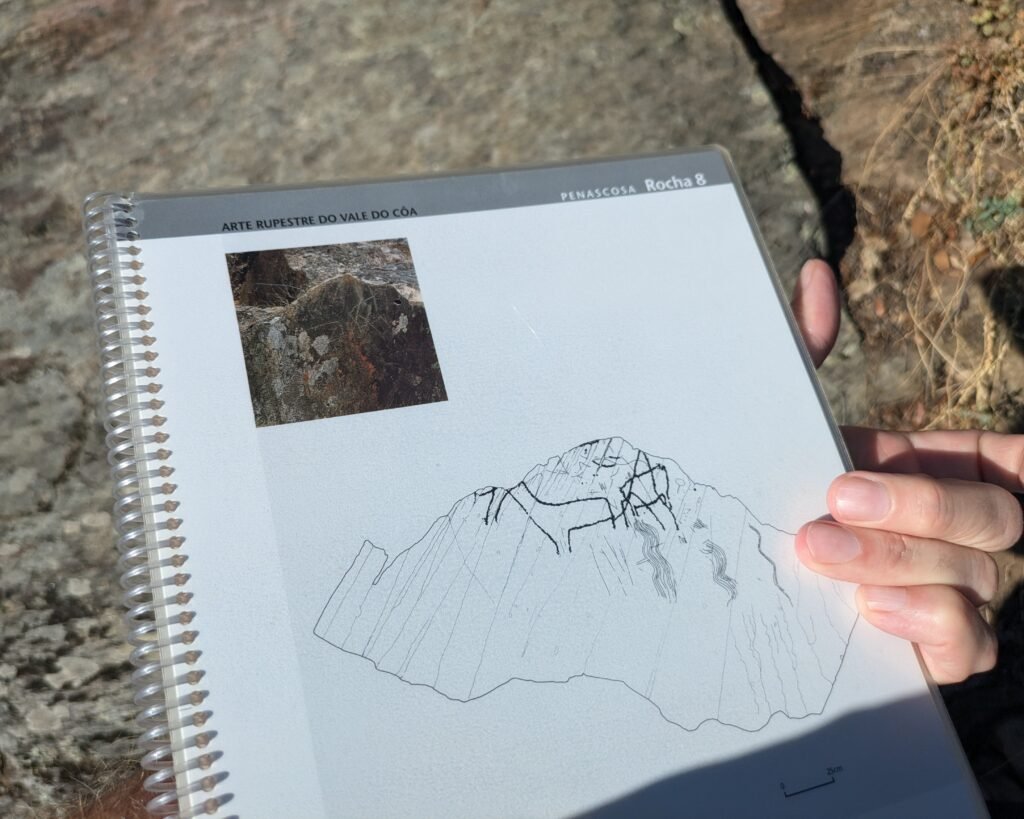
We see more and more engravings. We discuss their purpose – or at least the theories about their purpose(s). Perhaps they were religious or symbolic. Perhaps they were for communicating or recording tribal locations or movements. We’ll most likely never know! Archaeologist António Martinho Bautista has written, “…the real meaning of Paleolithic art shall remain forever within the domain of secrets.”1
Location
The Côa Valley Archaeological Park is in the northern part of Guarda district, in Central Portugal. It’s in the municipality of Vila Nova de Foz Côa. The Côa River is a tributary of the Douro River, which runs east-west from Spain to Porto in Northern Portugal. The Côa River is in the western part of Portugal, near the Spanish border.
The Penascosa site is on the right bank of the river, several kilometers upriver from the original (incomplete) dam. It lies approximately where the flooded part of the river ends, approximately between the villages of Chãs and Almendra.
Access
You must visit the site with an official guide: either from the museum or from a licensed private guide.
The guided tour begins at the Welcome Centre for the Côa park. That’s in the village of Castelo Melhor, along the main road running from Vila Nova de Foz Côa to Almendra, about 14km east of Vila Nova de Foz Côa. The Penascosa site is reached by 4WD vehicle about 6km along a dirt road.
Note: The valley is extremely hot in the summer. If you go between May and September, you should prepare for high temperatures. Hats, sunblock, and lots of water are essential. There are some shaded areas at the Penascosa site, but the rocks themselves are all exposed and you will be standing and walking in the sun.
Signage
There are signs guiding you to the starting point for a guided visit in Castelo Melhor. On the road between Vila Nova de Foz Côa and Almendra, there’s a sign at the turn-off to take you to Castelo Melhor that also points out Penascosa. In the village there are signs to direct you to the Reception Centre which is the meeting point for the guided tours.
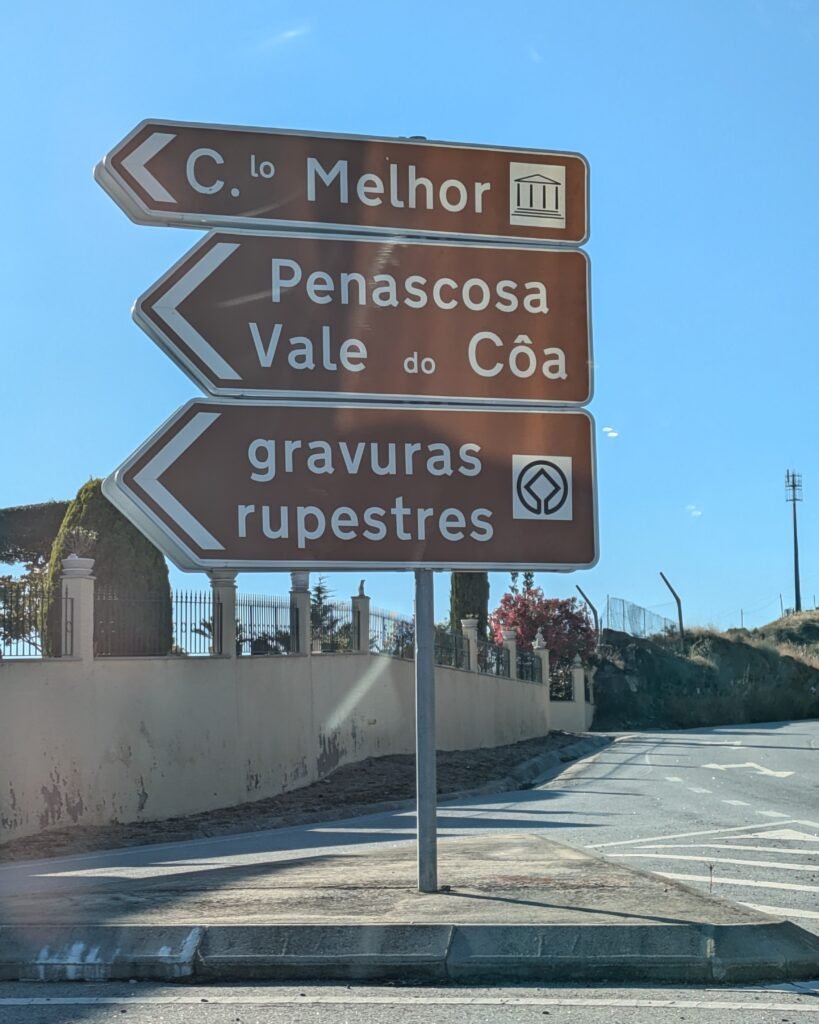
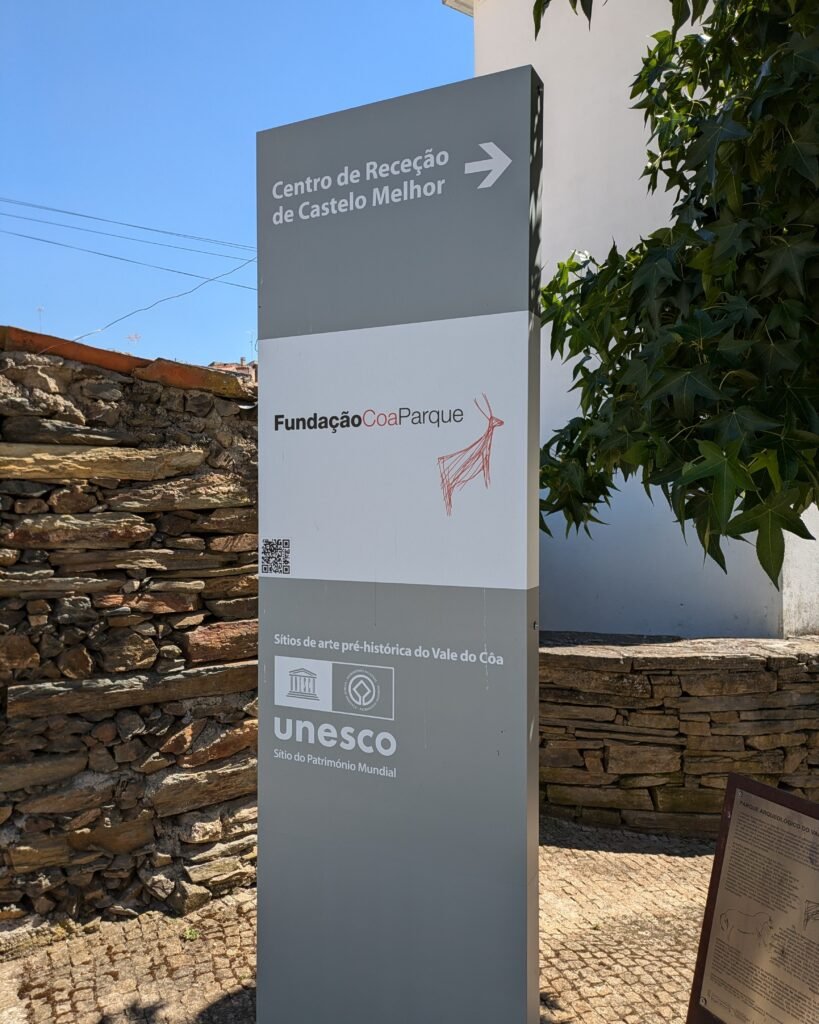

Links
- Description (in English) of a visit to the site from the Côa Museum, including booking information
- Description (in English) of a night-time visit to Penascosa (including booking information) from the Côa Museum
- Video (in Portuguese) by the Côa Museum showing a visit to the site
- Video (in Portuguese) by RTP2 showing a night visit to Penascosa
- Searchable inventory (in Portuguese or English) of the rock art of the valley (including Penascosa’s rocks), published by the park’s museum
- Description (in Portuguese) from Archaeologist’s Portal of Directorate-General of Cultural Heritage
- Designation (in Portuguese) as a national monument by the Directorate-General of Cultural Heritage
Nearby
There are several visitable rock art sites in the Côa Valley Archaeological Park. The Côa Museum in Vila Nova de Foz Côa is well worth a visit, as it has excellent exhibits giving more detail about the art and Paleolithic life. Outside the park, there is the Chalcolithic/Bronze Age site of Castelo Velho de Freixo de Numão about 12km away. Slightly further is the chalcolithic Pala da Moura anta, about 28km away.
- Côa & Siega Verde: The Art of the Light, book by IGESPAR, Instituto de Gestão do Património Arqueológico e Arquitectónico. ↩︎
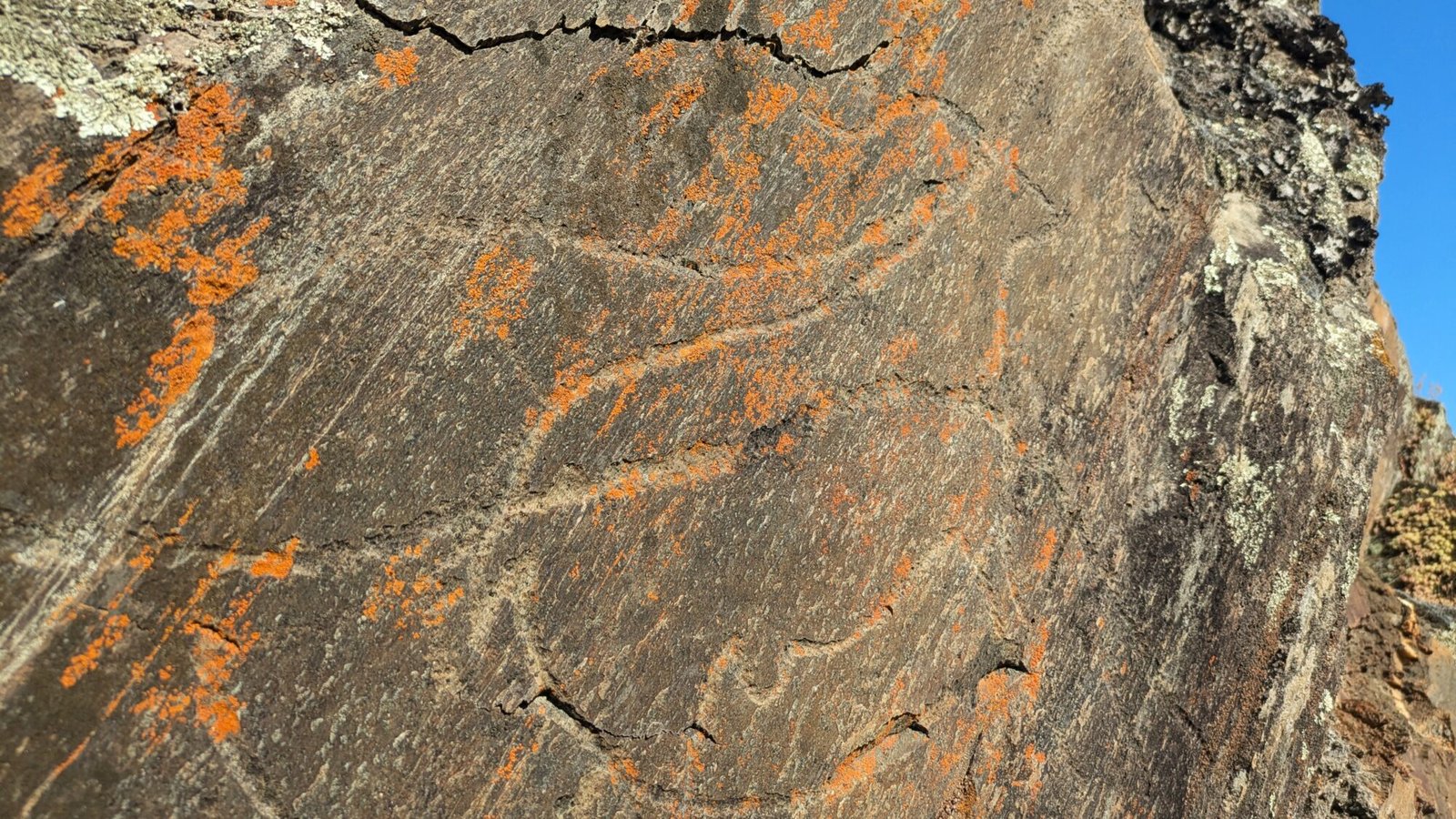
Pingback:Prehistoric Rock Art Sites in the Côa Valley - Prehistoric Portugal